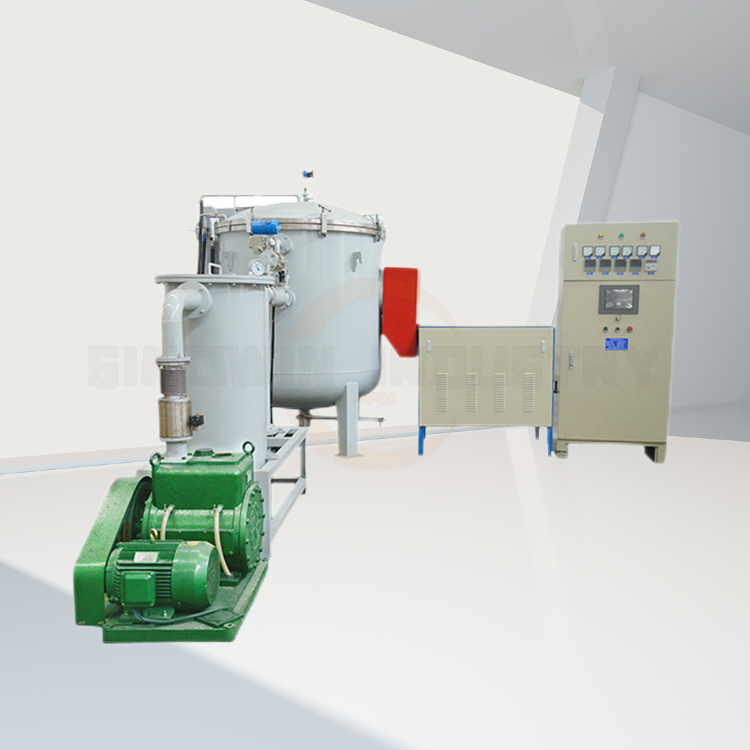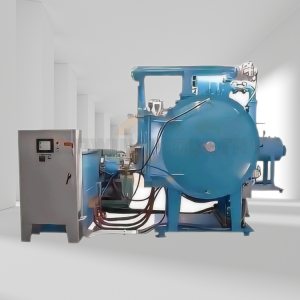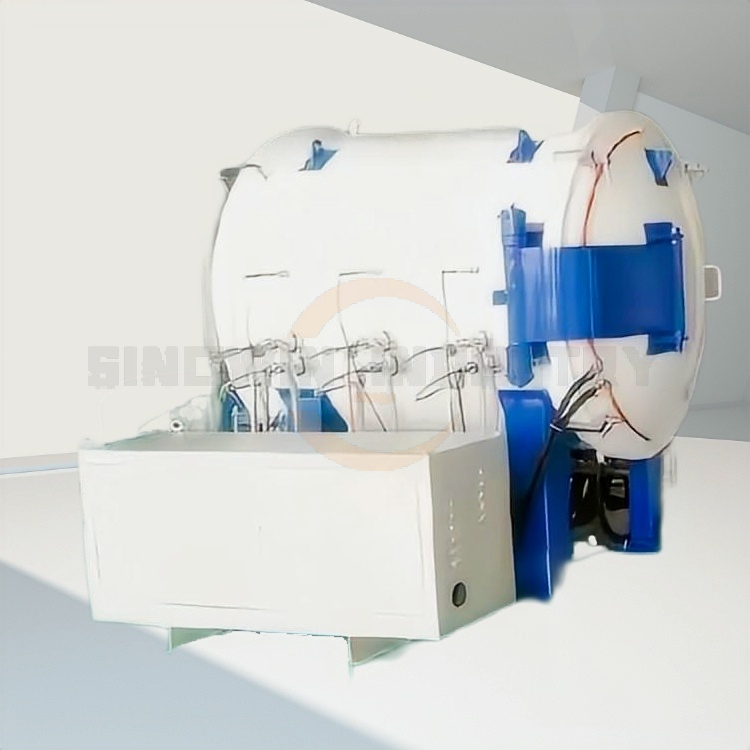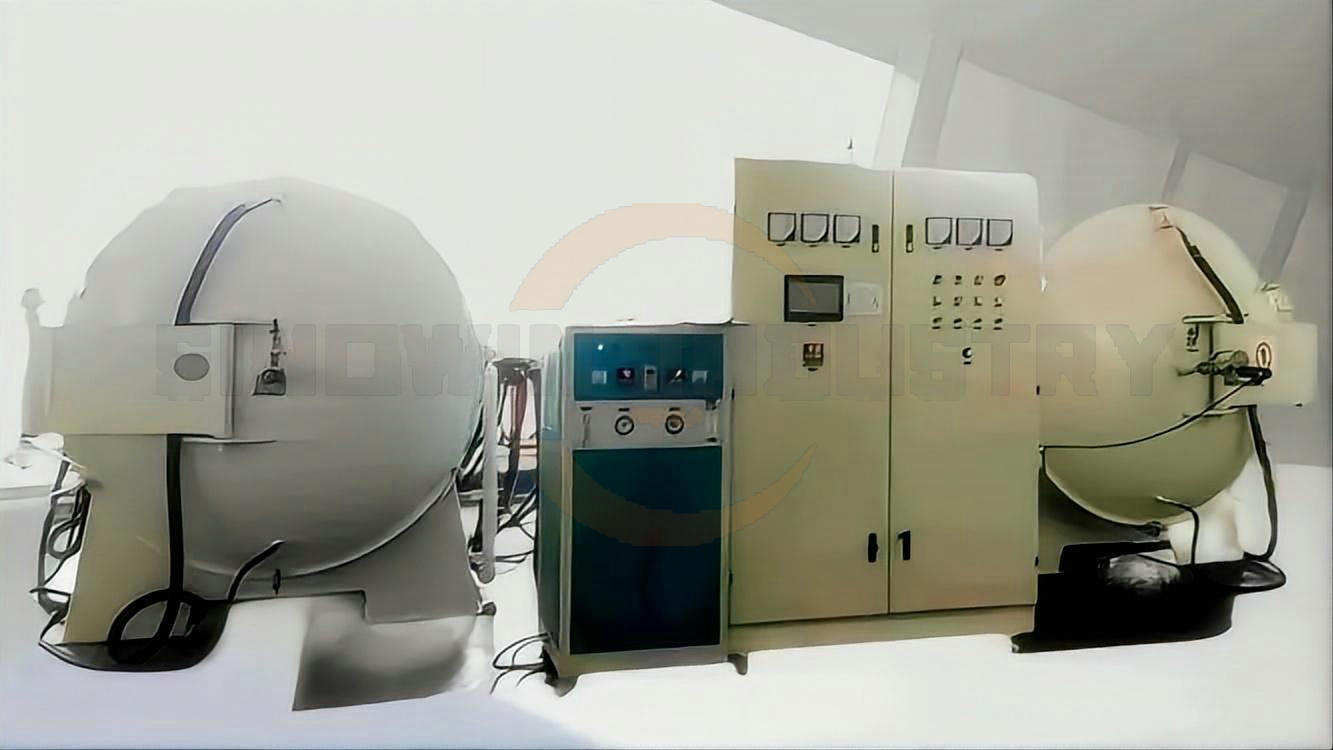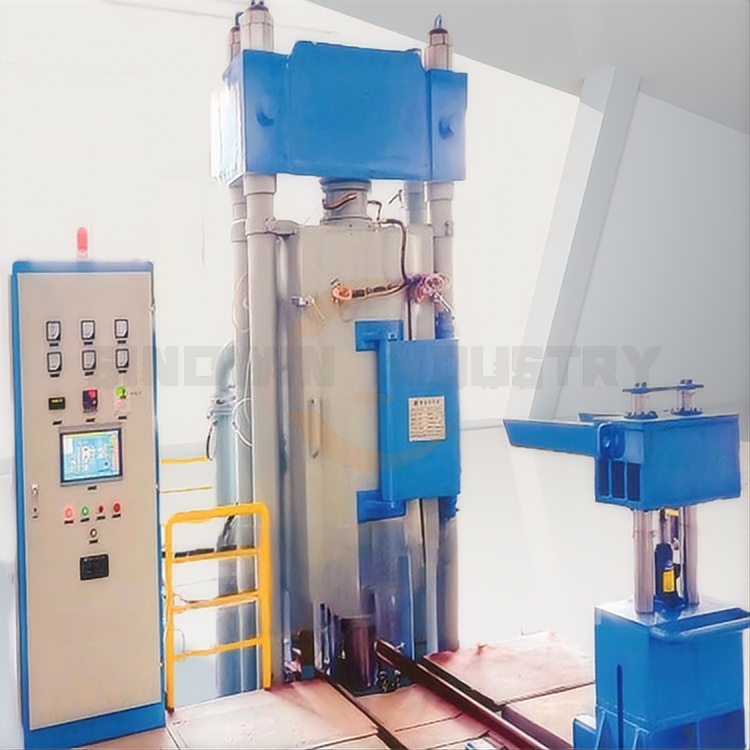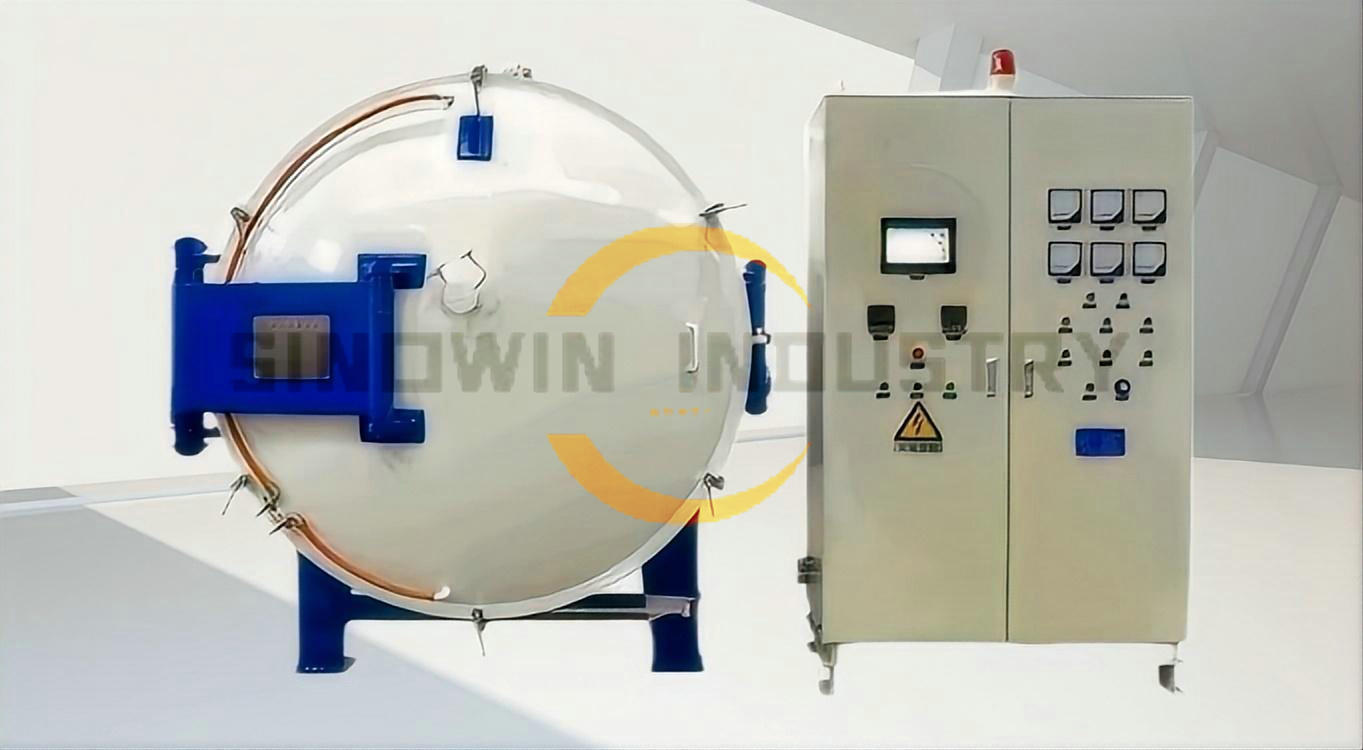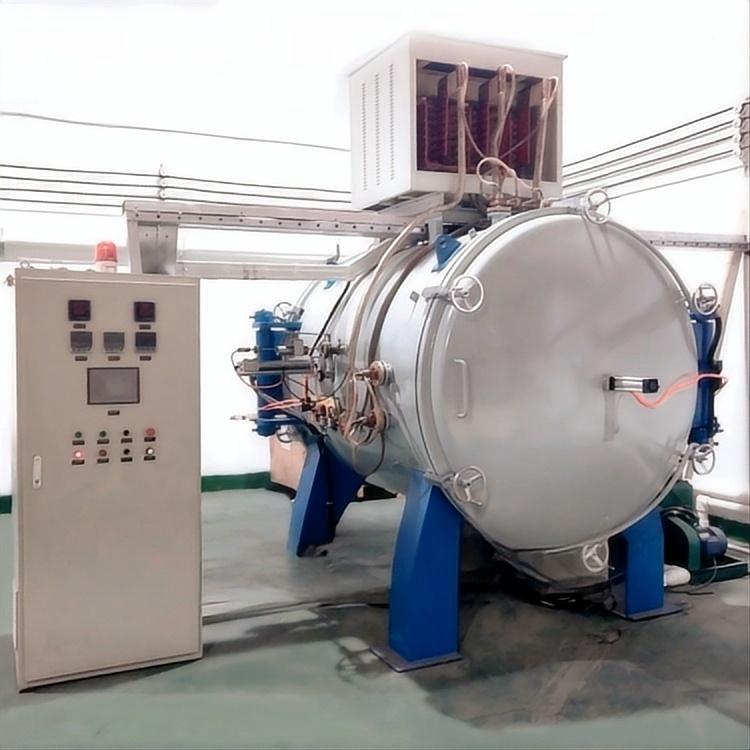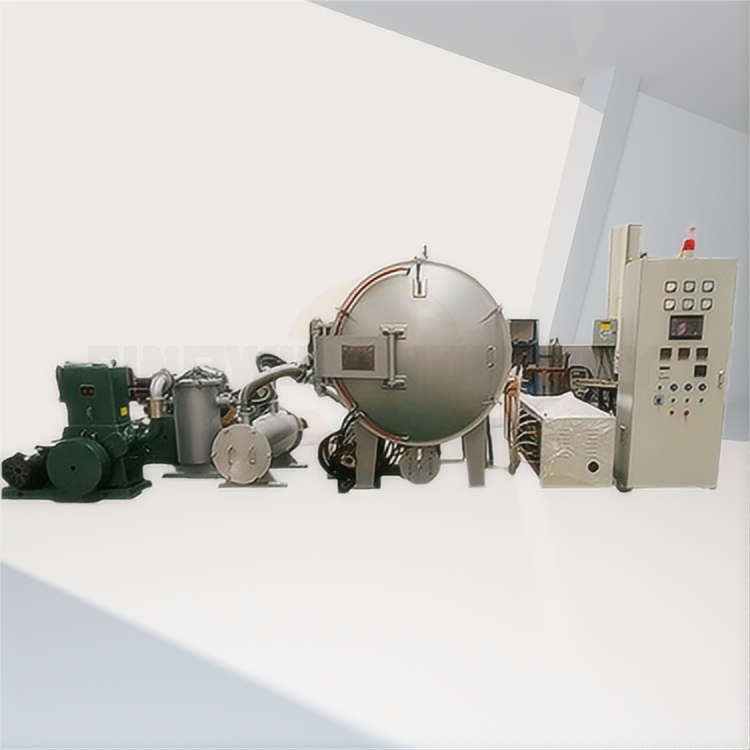Product Description:
The Chemical Vapor Deposition (CVD) Furnace is an advanced equipment specifically for the chemical vapor deposition of composite materials. This furnace utilizes hydrocarbons such as C3H8 as a carbon source, making it ideal for the synthesis of C/C composites, SiC composites, and various other applications including CVD, CVI treatment, surface carbon enhancement of graphite components, and graphene production.
Key Features:
- Multi-functional High-Temperature Design: The CVD furnace is engineered for simultaneous CVD and graphitization processes, ensuring efficiency and convenience for users.
- High Operating Temperature: With an impressive operating temperature of up to 2600°C, our furnace is capable of maintaining long-term, stable, and reliable performance, suitable for extensive industrial applications.
- Advanced Temperature Control System: Integrated with a combination of thermocouples and infrared thermometers, the automatic temperature conversion system provides precise temperature display and control across all ranges, enhancing operational accuracy.
- Energy-Efficient Induction Heating: Utilizing IGBT as the primary power device, the induction heating frequency control system reduces energy consumption, minimizes harmonic distortion, and guarantees non-interference with external equipment.
- Precise Gas Flow Control: The furnace features accurate gas flow measurement and control for both inflow and outflow, ensuring product stability and consistent results throughout the deposition process.
- Specialized Deposition Chamber: The specially designed chamber boasts excellent sealing characteristics and strong pollution resistance, protecting the integrity of the deposition process.
- Uniform Gas Pathway Design: The multi-channel gas pathway ensures an even flow field with no dead zones, allowing for superior deposition results and higher quality coatings.
- Effective Filtration System: Our unique filtration system efficiently handles by-products such as tar, solid dust, and organic gases generated during carbon deposition, contributing to a cleaner operational environment.
The Chemical Vapor Deposition(CVD) Furnace stands at the forefront of CVD technology, offering professionals a robust solution for high-temperature chemical vapor deposition applications. Elevate your material synthesis processes with this state-of-the-art furnace designed to meet the challenging needs of modern manufacturing.
Technical Parameter:
Parameter of the IGBT HEATING Chemical Vapor Deposition(CVD) Furnace with Round Furnace Chamber:
| Work Size DXH(mm) | Ф300X
400 |
Ф400X
500 |
Ф500X
600 |
Ф600X
800 |
Ф800X
800 |
||||||||
| Work Temperature(℃) | 1500 | 2600 | 1500 | 2600 | 1500 | 2600 | 1500 | 2600 | 1500 | 2600 | |||
| Temperature uniformity(℃) | ±7.5 | ±7.5 | ±7.5 | ±7.5 | ±7.5 | ||||||||
| Voltage(V) | 3 phase,380 | ||||||||||||
| Rated Power(KW) | 40 | 80 | 60 | 150 | 80 | 160 | 90 | 200 | 160 | 350 | |||
| Atmosphere | Vacuum/Ar/N2/H2/C/MTS | ||||||||||||
| The above chemical vapor deposition furnace technical parameters can be adjusted according to the process parameters, not as a basis for acceptance, the specific technical plan and agreement shall prevail. The two functions of chemical vapor deposition and high temperature graphitization can be separated into chemical vapor deposition furnace and high temperature graphitization furnace. | |||||||||||||
Parameter of the Resistance Heating Chemical Vapor Deposition(CVD) Furnace with Square Furnace Chamber:
| Work Size | m | 300*300*400 | 450*450*750 | 500*500*1200 | 500*500*1500 | 600*600*2000 | 750*750*2000 |
| Heat Method | / | Graphite resistance heating | |||||
| Loading Volume | L | 36 | 151 | 300 | 375 | 720 | 1125 |
| Loading Capacity | g | Customizable | |||||
| Power | KW | 55 | 85 | 160 | 185 | 225 | 300 |
| Ultra Vacuum | Pa | (cold state)6.67*10Pa(Customizable) | |||||
| Work Temperature | ℃ | 1500 | 1500 | 1500 | 1500 | 1500 | 1500 |
| Max.Temperature | ℃ | 1600 | 1600 | 1600 | 1600 | 1600 | 1600 |
| Atmosphere | / | Multi-channel process gas can be entered, and the high-precision flowmeter can control the reaction of carrier gas (N2, Ar) and reaction gas (C,H2, MTS, etc.) or Vacuum | |||||
Parameter of the Resistance Heating Chemical Vapor Deposition(CVD) Furnace with Round Furnace Chamber:
| Work Size -D×H(mm) | Φ300×500 | Φ600×800 | Φ800×1200 | Φ1000×1500 | Φ1100×2000 |
| Volume(L) | 35 | 226 | 602 | 1177 | 1899 |
| Work.Temperature(℃) | 1500 | 1500 | 1500 | 1500 | 1500 |
| Heating Method | Resistance Heating | ||||
| Atmosphere | Inert gas (N2,Ar) and reaction gas (C,H2,MTS,etc.) or Vacuum | ||||
| Ultra Vacuum(Pa) | 6X10ˉ²(Vacuum cooling) | ||||
Whether you are in research, analysis, or manufacturing, the Chemical Vapor Deposition(CVD) Furnace supplied from SINOWIN INDUSTRY is one guaranteed option for your heating treatment industry.
Donot hesitate to Contact us at once for quotation of Sinowin Industry’s industrial&lab furnaces , and we are not only a supplier but a reliable partner to assist you the safe solutions of the heat treatment .
Q&A of The Chemical Vapor Deposition (CVD) Furnace
Q1: What is a Chemical Vapor Deposition (CVD) furnace, and how does it work?
A1: A Chemical Vapor Deposition (CVD) furnace is an advanced manufacturing tool used to deposit thin films of materials on a substrate. The process involves introducing gaseous precursors into the furnace chamber, where they react chemically to form a solid material that adheres to the substrate. This method ensures high-quality coatings with precise control over thickness and composition.
Q2: What materials can be deposited using a CVD furnace?
A2: A CVD furnace can deposit a variety of materials, including but not limited to, silicon, silicon dioxide, metals, and metal oxides. It is widely utilized for producing high-purity films essential for applications in electronics, optics, and coatings.
Q3: What is the role of CVD furnaces in semiconductor production?
A3: In semiconductor production, CVD furnaces are critical for creating thin films of insulators, semiconductors, and conductors. These films are essential for fabrication processes such as doping, etching, and passivation, ultimately contributing to the function and reliability of semiconductor devices.
Q4: What are the main advantages of CVD compared to other deposition methods?
A4: The primary advantages of CVD over other deposition methods include excellent uniformity and conformity of films, the ability to deposit on complex geometries, and control over film properties through precise temperature and pressure regulation. This makes CVD highly versatile for various industrial applications.
Q5: What key factors should be considered when choosing a CVD furnace?
A5: When selecting a CVD furnace, consider factors such as the desired material to be deposited, the size and type of the substrate, the required temperature and pressure ranges, uniformity needs, and the capability for automation and process control. Additionally, energy efficiency and maintenance requirements are crucial for optimal long-term use.
Q6: How does plasma-enhanced chemical vapor deposition (PECVD) differ from traditional CVD?
A6: Plasma-enhanced chemical vapor deposition (PECVD) utilizes plasma to enhance the chemical reactions in the deposition process. This allows PECVD to operate at lower temperatures compared to traditional CVD and expand functionality for materials that are sensitive to heat, making it ideal for certain applications in electronics and optics.
Q7: What safety precautions should be followed when using a CVD furnace?
A7: When operating a CVD furnace, it is essential to follow strict safety protocols, including proper ventilation to avoid gas accumulation, use of personal protective equipment (PPE), regular maintenance checks, and training for all operators. Understanding the specific materials and gases being used is also vital to mitigate risks associated with exposure and handling.
Q8: Which industries can benefit the most from chemical vapor deposition technology?
A8: Several industries benefit significantly from CVD technology, including semiconductor manufacturing, solar energy production, aerospace, optics, and advanced material fabrication. These sectors utilize CVD to produce high-performance coatings and films that are crucial for innovation and product reliability.
Q9: How can I improve the efficiency of my CVD process?
A9: To enhance the efficiency of your CVD process, focus on optimizing process parameters such as gas flow rates, temperature, and pressure settings. Regular maintenance of the furnace, utilizing advanced monitoring technologies, and ensuring material purity can also contribute to improved yields and reduced waste.
Q10: What common issues occur in chemical vapor deposition, and how can they be resolved?
A10: Common issues in CVD processes include film non-uniformity, unwanted contaminants, and suboptimal film characteristics. To resolve these problems, conduct regular calibrations of the equipment, maintain a clean environment to reduce contamination, and tweak the reactant flow and temperature settings to ensure appropriate reaction kinetics for uniform deposition.
Parameter of the IGBT HEATING Chemical Vapor Deposition(CVD) Furnace with Round Furnace Chamber:
| Work Size DXH(mm) | Ф300X
400 |
Ф400X
500 |
Ф500X
600 |
Ф600X
800 |
Ф800X
800 |
||||||||
| Work Temperature(℃) | 1500 | 2600 | 1500 | 2600 | 1500 | 2600 | 1500 | 2600 | 1500 | 2600 | |||
| Temperature uniformity(℃) | ±7.5 | ±7.5 | ±7.5 | ±7.5 | ±7.5 | ||||||||
| Voltage(V) | 3 phase,380 | ||||||||||||
| Rated Power(KW) | 40 | 80 | 60 | 150 | 80 | 160 | 90 | 200 | 160 | 350 | |||
| Atmosphere | Vacuum/Ar/N2/H2/C/MTS | ||||||||||||
| The above chemical vapor deposition furnace technical parameters can be adjusted according to the process parameters, not as a basis for acceptance, the specific technical plan and agreement shall prevail. The two functions of chemical vapor deposition and high temperature graphitization can be separated into chemical vapor deposition furnace and high temperature graphitization furnace. | |||||||||||||
Parameter of the Resistance Heating Chemical Vapor Deposition(CVD) Furnace with Square Furnace Chamber:
| Work Size | m | 300*300*400 | 450*450*750 | 500*500*1200 | 500*500*1500 | 600*600*2000 | 750*750*2000 |
| Heat Method | / | Graphite resistance heating | |||||
| Loading Volume | L | 36 | 151 | 300 | 375 | 720 | 1125 |
| Loading Capacity | g | Customizable | |||||
| Power | KW | 55 | 85 | 160 | 185 | 225 | 300 |
| Ultra Vacuum | Pa | (cold state)6.67*10Pa(Customizable) | |||||
| Work Temperature | ℃ | 1500 | 1500 | 1500 | 1500 | 1500 | 1500 |
| Max.Temperature | ℃ | 1600 | 1600 | 1600 | 1600 | 1600 | 1600 |
| Atmosphere | / | Multi-channel process gas can be entered, and the high-precision flowmeter can control the reaction of carrier gas (N2, Ar) and reaction gas (C,H2, MTS, etc.) or Vacuum | |||||
Parameter of the Resistance Heating Chemical Vapor Deposition(CVD) Furnace with Round Furnace Chamber:
| Work Size -D×H(mm) | Φ300×500 | Φ600×800 | Φ800×1200 | Φ1000×1500 | Φ1100×2000 |
| Volume(L) | 35 | 226 | 602 | 1177 | 1899 |
| Work.Temperature(℃) | 1500 | 1500 | 1500 | 1500 | 1500 |
| Heating Method | Resistance Heating | ||||
| Atmosphere | Inert gas (N2,Ar) and reaction gas (C,H2,MTS,etc.) or Vacuum | ||||
| Ultra Vacuum(Pa) | 6X10ˉ²(Vacuum cooling) | ||||
